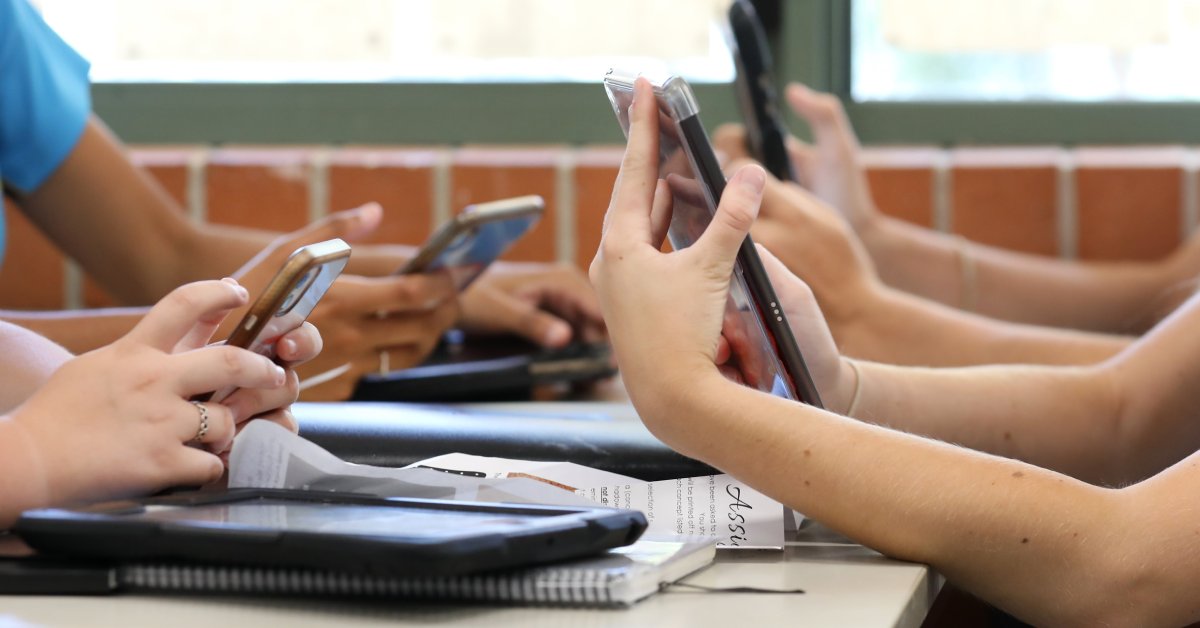Mobile devices have redefined the educational experience, with essential features ranging from interactive learning apps to virtual classrooms. Thanks to these advances, it’s easy to see why tablets, smartphones, and laptops have become essential tools for modern-day education.
That said, this increasing dependence comes with a significant challenge—protecting sensitive student data. Personal information like grades, health records, and contact details are now susceptible to cyber threats, making mobile device security a non-negotiable aspect of 21st-century education.
This complete walkthrough explores the critical importance of mobile device security in schools and offers actionable solutions for educators and parents to safeguard student data effectively. Find out how secure mobile devices protect student data and how they will continue to do so for years.
Why Data Protection is Essential in the Digital Learning Era
Educational environments are facing unique challenges when it comes to data security. Unlike corporations, schools and universities may lack the resources to invest in robust IT systems. This creates vulnerabilities in protecting sensitive student information that cybercriminals can exploit. More alarming is the fact that students, even those who spend ample time online, sometimes lack a comprehensive understanding of cyber risks, leaving them particularly exposed.
Personal identifiable information (PII), such as Social Security numbers, contact information, and educational records, is highly valuable to hackers. Left unprotected, this data can lead to identity theft, cyberbullying, or even physical safety concerns if it falls into the wrong hands. With mobile devices increasingly serving as the gateway to education, securing them is no longer optional—it’s imperative.
Secure Mobile Devices Tailored for Education
The first step toward data protection is selecting devices that come with built-in security features designed to safeguard users. Devices like iPads equipped with enhanced security settings, laptops with biometric authentication capabilities, or smartphones supporting secure communication apps enhance student safety. For instance, the secure cell phones from Connecta Mobile are available for anyone who wants to equip themselves with 256-bit encryption and other robust security features. Simply put, you can protect yourself in many ways, so choose your devices wisely.
Additionally, many tablets and laptops now feature privacy screens to protect visual data, especially in classroom settings where students may inadvertently share personal information. Some devices also come loaded with parental controls, which ensure safe browsing and block malicious websites. These tools mark the line between devices just being educational tools and becoming critical protectors of personal information.
Proactive Measures to Ensure Device Security
While having secure devices is a strong starting point, maintaining their security requires proactive effort. Regularly updating software and operating systems is one of the simplest yet most effective actions that parents and educators can take. Security patches ensure vulnerabilities are regularly minimized, keeping unauthorized access at bay.
Promoting Better Practices Now
Another critical measure is the use of complex passwords or biometric logins. Simple or repetitive passwords are easy targets for malicious attacks, making it essential to educate students about password security. Using strong, unique passwords or two-factor authentication can dramatically reduce the likelihood of a breach.
Furthermore, mobile device management (MDM) platforms—particularly those tailored for educational institutions—allow administrators to monitor and secure multiple devices remotely. These systems enable centralized control, ensuring compliance with best practices and enabling immediate lockdowns in the event of a suspected breach.
Activating advanced monitoring and restricting device usage to sanctioned apps make it easy for schools to drastically reduce instances of data misuse. These examples underline that the right combination of technology and awareness can yield exceptional results in safeguarding student information.
Shared Responsibility for Data Protection
The responsibility of safeguarding student data does not fall solely on schools or technology providers; parents and educators play a pivotal role. Beyond investing in secure devices, fostering awareness is equally important.
Parents should talk to their children about online threats, guiding them on how to identify phishing attempts and avoid sharing personal data online. Meanwhile, educators should incorporate lessons on cybersecurity into the curriculum, encouraging students to adopt safe online behaviors.
Promoting healthy digital habits is just as essential as teaching math or science in preparing students for the challenges of the modern world. Simple exercises, such as conducting classroom sessions on recognizing secure websites or how to handle suspicious emails, can make a substantial difference.
Proper Usage of Secure Devices at Schools
Knowing how secure mobile devices protect student data is critical before using this technology on campus. Implementing secure devices in schools necessitates a structured, comprehensive approach to guarantee both safety and usability. The process involves careful planning, investment in robust technology, and ongoing education for all stakeholders—students, educators, administrators, and IT staff.
Before adopting secure devices, schools must define detailed policies that outline acceptable use, security protocols, and data management practices. These policies should address issues such as internet access limitations, the handling of sensitive student data, and the steps to mitigate risks like cyberbullying or unauthorized access. Clear guidelines should be communicated to students and parents, emphasizing the shared responsibility in maintaining device security.
Schools must carefully evaluate and select mobile devices known for their security features. Trusted devices often include built-in protections such as encrypted data transmission and robust access controls. Collaborating with reputable vendors specializing in educational technology can help ensure that devices meet stringent cybersecurity standards. Furthermore, selecting devices compatible with remote management systems allows for easy updates and monitoring.
Elevate Your Mobile Management Today
The integration of mobile devices in education has transformed the learning landscape. But as their influence grows, so does the need for stringent measures to ensure student data safety. From selecting secure devices with built-in protections to educating children about online risks, the responsibility for cybersecurity is equally shared by parents, educators, and the tech industry alike.
With both immediate measures and long-term technological advancements, we can ensure that mobile device adoption enhances, rather than endangers, educational experiences. Ultimately, it’s all about creating trust. Secure devices don’t just protect data—they empower children to explore their world with confidence, free from the fear of exploitation.
Safeguarding student data and ensuring secure technology use in schools is not an option—it is a responsibility. Begin evaluating your institution’s current security measures and identify areas for improvement.


